Part 1: What is a secondary credit model?
Part 2: Investing through LendingRobot
As described in part 1, any future of boosting returns through finding higher performing loans lies in investing via algorithms. And while most of us are not statistical wunderkinds who can construct these formulas ourselves, there are a number of third-party services that can do this for us.
LendingRobot is a low-cost automated investing tool.
One such service is LendingRobot, based here in Seattle. Simply stated, LendingRobot is a low-cost automated investing tool for Lending Club and Prosper. It can invest on your behalf far more quickly and efficiently than if you would invest on your own.
How exactly does LendingRobot improve peer to peer lending? It does it by making the investing process simple and automatic while increasing your returns and offering you a way to liquidate your entire account.
Let’s look at these benefits one by one.
Five Helpful Reasons to Use LendingRobot
#1. Simpler peer lending
Once your Lending Club or Prosper API credentials have been added to LendingRobot, investing is as simple as moving a slider and clicking two buttons. It really is that simple. You don’t even have to learn about loan grades.
The slider is your preferred risk tolerance, meaning how aggressive or conservative you want your investment to be. A more conservative setting places your cash in safer loans while a more aggressive setting places your cash in riskier loans that typically earn a higher return.
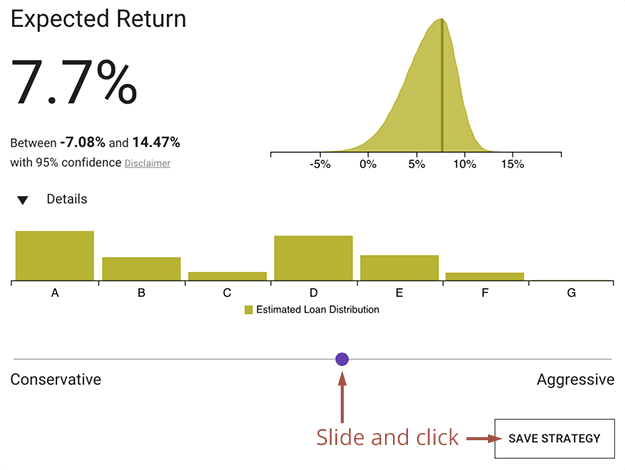
Once the slider is set, you simply click Save Strategy and then click your account from Paused to Investing.
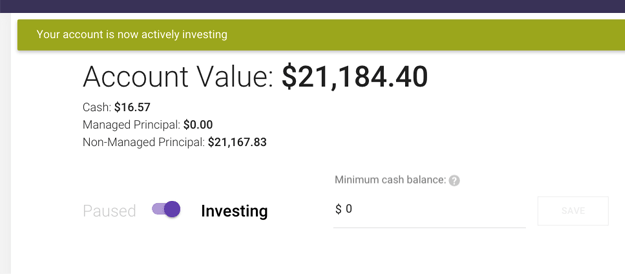
That’s it. Your investing is completely taken care of from this point forward.
#2. Automatic reinvestment

The LendingRobot Robot
LendingRobot will automatically invest in new loans for you within a second of them being added to the platforms, much faster than the automated options at Lending Club or Prosper. This speed means it grabs many loans that these onsite services would have missed or left behind.
Faster automated investing means more of your money is put to work quicker, reducing cash drag and increasing your return. This is particularly helpful for people investing large lump sums at once. A $20,000 investment in 800 notes, for example, can take weeks to fully invest if even a simple filter is used. Using LendingRobot, that time could be cut in half.
#3. Smart algorithm investing
The centerpiece of LendingRobot’s entire operation is its algorithm, the math it uses to choose which notes to invest in. Often investors have to choose between hundreds or thousands of available loans at Lending Club. Which are the best?
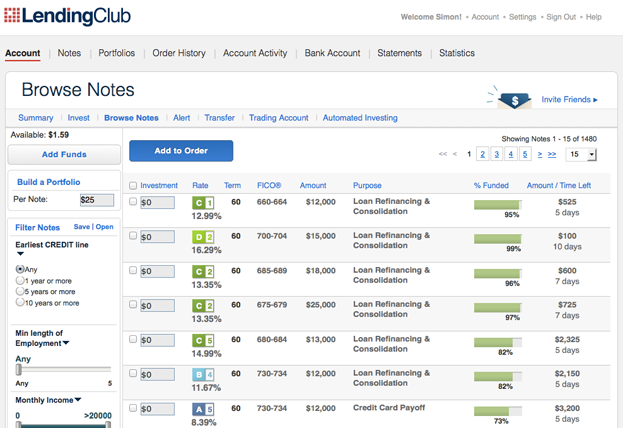
Example: 1480 loans to choose from at Lending Club.
LendingRobot makes the process easier by using machine-learning to calculate which notes are more likely to perform better than others. The moment new loans are added to the platforms, the algorithm analyzes the variables of these loans and only invests in the best ones. The entire process, again, takes a split second.
As covered in part 1, algorithm investing has two major benefits:
- Increased returns – algorithm investing can potentially give you a higher return than simply choosing the loans yourself at random. They were written to beat the index.
- Protection – algorithms do not invest in below-quality loans. If Lending Club or Prosper ever lowers the standards they use to approve borrowers and adds a bunch of junk loans to their platforms, average investors would likely grab these loans without knowing the difference. But algorithm investors would not invest at all. Their cash would remain protected.
#4. Account liquidation for Lending Club
Automated investing is great, but it isn’t all that groundbreaking. In a sense, neither is algorithm investing. However, LendingRobot is the first service nationwide that gives investors the ability to quickly liquidate their account. In the language of the industry, LendingRobot is on the forefront of bringing liquidity to this somewhat illiquid investment.
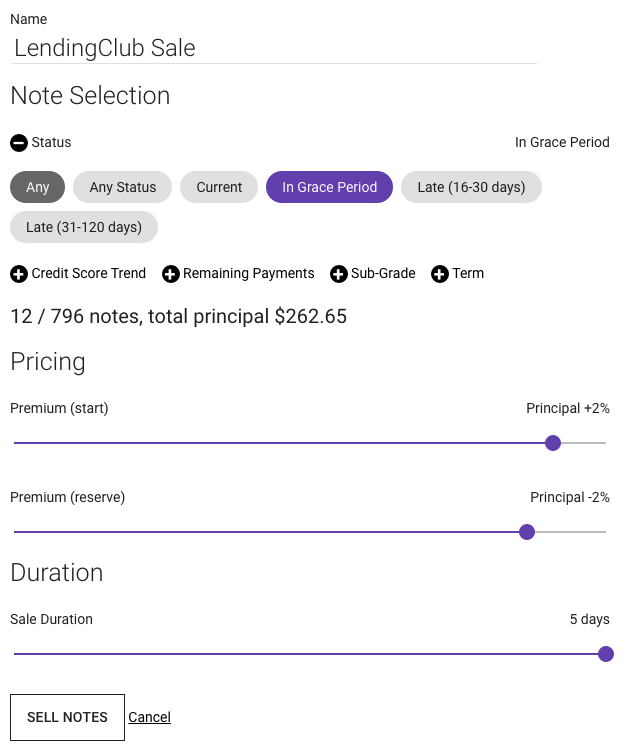
What does this mean for you? It means you can have LendingRobot post all your notes for sale on Folio, Lending Club’s secondary market. LendingRobot will then slowly lower their price point over five days until they’re all sold. You could have your entire $100,000 investment in cash within a week and potentially earn a premium on the sale! This is a tremendous breakthrough in this investment.
#5. Additional lending functions
On top of these four benefits, there are a number of other features that may appeal to more experienced investors, though newer investors will probably skip these.
For example, their advanced investing tool allows you to set up multiple fine-tuned filters, much better than Lending Club’s automated tool that can only use one at a time. And when you create these filters, the robot will automatically calculate an expected return and estimate how many loans will match this filter per week.
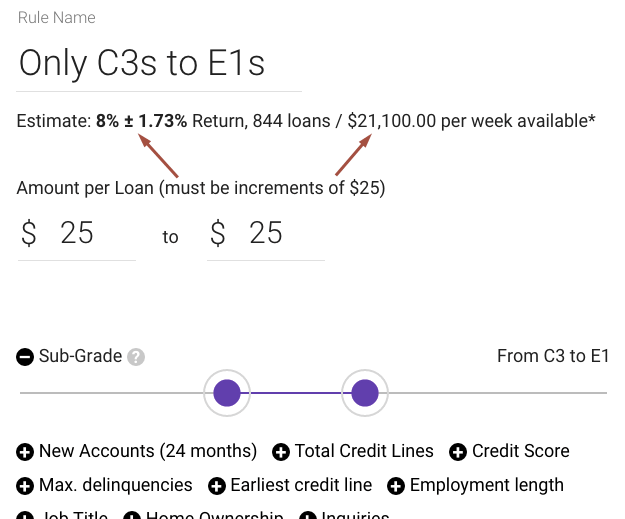
You can even set LendingRobot to purchase notes on the Folio secondary market at Lending Club. So if some investor is trying to liquidate their account, and offers their loans on Folio at a ridiculous discount, you can automatically snag them up.
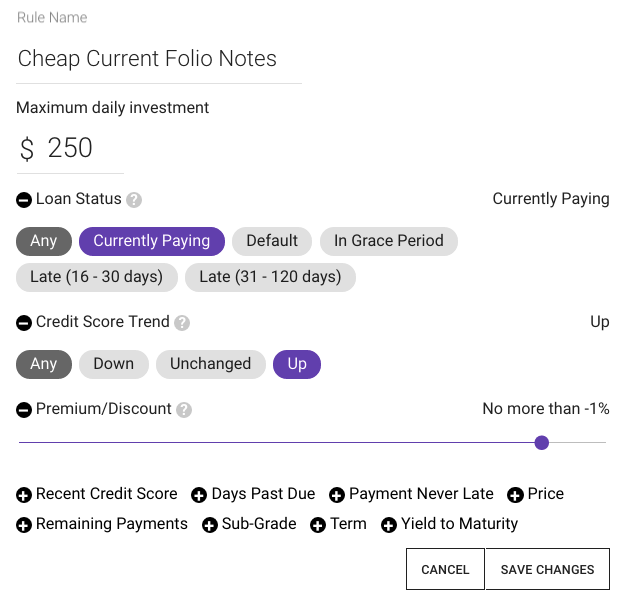
Remember, investors across the country often have no clue how to price their notes for sale, so you could earn a great return if you can figure out a strategy that works.
The Drawbacks to LendingRobot
While all this improved usability is wonderful, there are a few drawbacks to using their service. First, LendingRobot is not free. They charge account holders a fee equal to 0.45% of their managed account value (notes invested through LendingRobot), so investors who are trying to limit fees might want to stick with the free tools at Lending Club and Prosper. That said, many investors feel this small cost is worth it, made up for the increased return, liquidity, and extra features. Also, accounts below $5,000 are completely free.
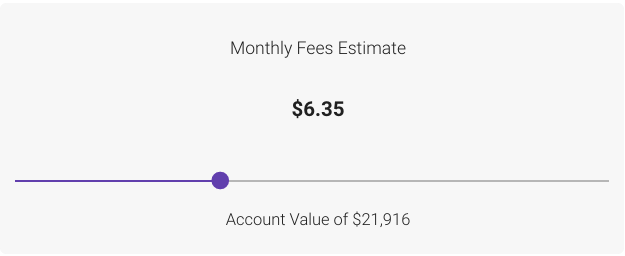
Secondly, the yield-benefits of algorithms within peer to peer lending seem a bit loose to me. I do believe that using them is better than using nothing at all, and I plan to switch over to it for my personal investments by the end of the year. However, I have yet to see much hard proof that algorithm investing actually increases returns, that they can achieve alpha (Investopedia) for investors.
A final issue is that Folio buying and selling (thus, liquidating your account) is only available for Lending Club. LendingRobot is in talks with Prosper to add this functionality in the future, but for now the feature is only available for one of the platforms. Also, liquidating your Lending Club account into cash is still a bit complicated, as it requires setting correct note premiums and discounts that new investors may not yet understand. This should change though, as LendingRobot does plan to offer a fully automated “Cash Out” button this fall.
The Death of Filtering, the Rise of the Robots
Perhaps the most intriguing aspect of peer to peer lending is how Lending Club and Prosper make their loan data freely available for public scrutiny. This open data is typically split into two major groups: (subset #1) the borrower attributes and (subset #2) the loan performance data. Not only do we have info on these borrowers (past delinquencies, employment status, etc) but we also get to see how the loans perform over time (number of payments, default rates, etc).
In my view, this value of transparency is what has given peer to peer lending its darling-status within the eyes of the personal investing world. Not only does the open data allow investors to understand this investment and feel safe about getting involved, but it also encourages them to try and increase returns by backtesting the loan performance (subset #2) with different cross-sections of the borrower data (subset #1). For example, filtering for borrowers who haven’t applied for a loan in the past six months (zero credit inquiries) has historically given investors a higher than average return.
However, starting in 2013 we saw Lending Club and Prosper greatly improve the integrity of their loans, and these simple filters began to stop working. Today in 2015 a few major filters still seem to boost ROI (see here), but overall the option for investors to increase returns with filters is pretty much over.
In the place of filtering we have intelligent services like LendingRobot.
In the place of filtering we have intelligent services like LendingRobot. And while some investors may mourn the loss of self-direction that simple filtering gave us, I am glad for this change. While perhaps more complicated overall, algorithms offer us a more solid and consistent way to have a positive experience, a change this investment needs as it matures into a national practice over the coming decade.

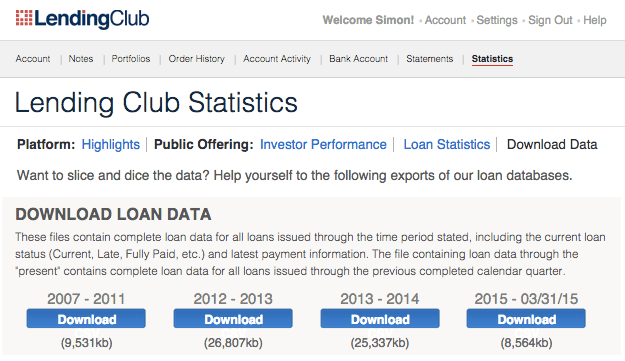
I use LR and it has made a huge difference, in my outcomes , and ease of use. For the small percentage the charge, it is well worth it.
There site is not user friendly, in some instances, to the uninitiated (like me). I’ve complained and their csr freely admits there are problem areas, particularly with their selling platform.
It does take a little time to figure it out but the support guys are really good about getting back to… you. They are constantly making it easier, but its like everything else, some investors might like a another bot.
Good Luck
Thanks for the review. I’ve been using LR for a while now and I am happy with it. I think there is a definitely a benefit to picking up good loans as soon as they arrive and this is the primary reason I use it.
I am very skeptical of the predicted returns, especially for Prosper. If I am not mistaken I believe they use Prosper 1.0 data and 2.0 data, so the expected returns are very low compared to NSR data for similar loans. The values can still be useful when comparing one loan to another, but the expected return I see as wholly unreliable for Prosper.
I am currently under the fee limit, however when I get close to the impending fees I will likely look for alternative free services.
I have just begun using Lending Robot to reinvest my LC payments. It is certainly easy and convenient but I wonder how well actual returns track with their estimated returns. Has anyone been using their alogorithm long enough to say how well it works?
Buyer beware!!! LendingRobot will allow you to create a LendingClub account from within their user interface, but you won’t be able to access anything on the LendingClub website with those credentials. The account exists only within LendingRobot, so if you want to review any information regarding the notes you’ve purchased you’ll have to create a second LendingClub account (like I did). Further, you currently cannot access the secondary market from LendingRobot for any of the three platforms (LC through LR, LC, or Prosper). I am therefore stuck with the Notes the robot purchased for me until: 1) LR fixes their FolioFN access or 2) the Notes close from default or repayment. What a calamity! And they have the nerve to post surveys asking which P2P lending services we want added to the Robot. Uh… how about you make the two you have now actually work as advertised?
Hi JD,
This is Gilad from LendingRobot.
Sorry about the misunderstanding – if you want we can transfer your account to a regular Lending Club account, and you’ll be able to log in on Lending Club and manage it (in addition or instead of using LendingRobot). To do that contact us through the tech support link on our web site.
With regard to the FolioFN access for accounts opened through LendingRobot: we’ve been working with Lending Club to enable that, and we expect that to be released within approx. 2 weeks. It is definitely a priority for us.
An update is in order for my earlier comment. Currently, the secondary market IS accessible for Lending Club accounts created within Lending Club (still not for those created within Lending Robot or Prosper). As you can see, they are working on those features.
Overall, the service is good for automating the purchase of primary notes. The secondary market automation only marginally improves upon the functionality of the filter on Lending Club’s FolioFN page. This means the Robot is not up to the task of vetting Notes with enough specificity to purchase only those notes you would have purchased yourself (which is the point, right?). The Lending Club API is full of useful data that the Robot does not consider (State and loan purpose to name two glaring omissions). Why would you ignore the same data points for a secondary note as those you’d use for a primary note? I don’t ignore them when deciding where to invest my money, and I don’t think the Robot should either. I recommend the Robot review Simon’s articles on Redlining and filters for earning an ROI above the average investor.
If you, like me, are looking for a service that provides access to primary market specificity for the task of secondary market purchases… the search continues.
Hi JD. Thanks for your comment. My hope is not that you copy my exact filters, but that you use the filtering articles alongside backtesting tools like NSRPlatform.com to create your own that are updated with the current historical loan data.
Personally, I think LendingRobot is a much better option because you don’t ever have to update your filters. They do all the work for you.
Cheers, Simon
Hello Simon,
Your articles are a great way to gain understanding of the complexity of the P2P market and the filters you use are a great starting point for those of us new to this type of investing. My comment spoke to the importance of using data points in general to create filters for an ROI above the standard investor; something your efforts here on Lending Memo articulate quite clearly. I did not mean to imply your filters were meant to be the gold standard.
As I mentioned above, I agree Lending Robot is well suited for automating investments in the Primary market. However, the service is ill equipped to provide users with an adequate tool for the Secondary market. The number of filters the Robot provides for the Secondary market are less than half the number provided for Secondary Market notes. I think this information is important for your readers to understand as they select a third party service to automate their investments more intelligently than the tools provided by Prosper and Lending Club.
Warm regards, JD
Great critique! Well thought out. Thanks.
Agreed. The worst part of my experience with them thus far is the unveiling of new site attributes when they haven’t even fixed the old bugs that have been “a few weeks from completion” for nearly nine months. Specifically, the inability to sell any Note purchased within a LendingClub account created by LendingRobot. I’m stuck with those loans for 60 months (as I assume LendingRobot will still be “weeks away” when the Notes reach maturity). I’d still like to see a more robust filter set for Secondary Market Notes before I’d be comfortable entrusting the Robot with my money.
Great article. I have never done any P2P lending and as such I wasn’t aware of robotic loans investing.
Since Lending robot was acquired by NSR invest, it has not been updated for a long time. Lending robot app was took down I guess to cut cost. It also have not display expected return for half year. LendingRobot claimed they are trying to combine with NSR. Anyway, I feel LendingRobot is dead and the NSR just want to push the users to switch to NSR.
You may be expecting a flate of .45% on prinicipal managed.
Also, take a look at their monthly billing statements. Is the fee in line with principal invested?
Check the numbers folks. A chat with support that the fee being applied is on a greater amount than you think.
Excellent writing indeed!
In my opinion, Lending-Robot allows investors to optimize their strategies and define rules to systematically execute them. Automation also helps save time and increase returns by continuously reinvesting idle cash.
Thanks for sharing!